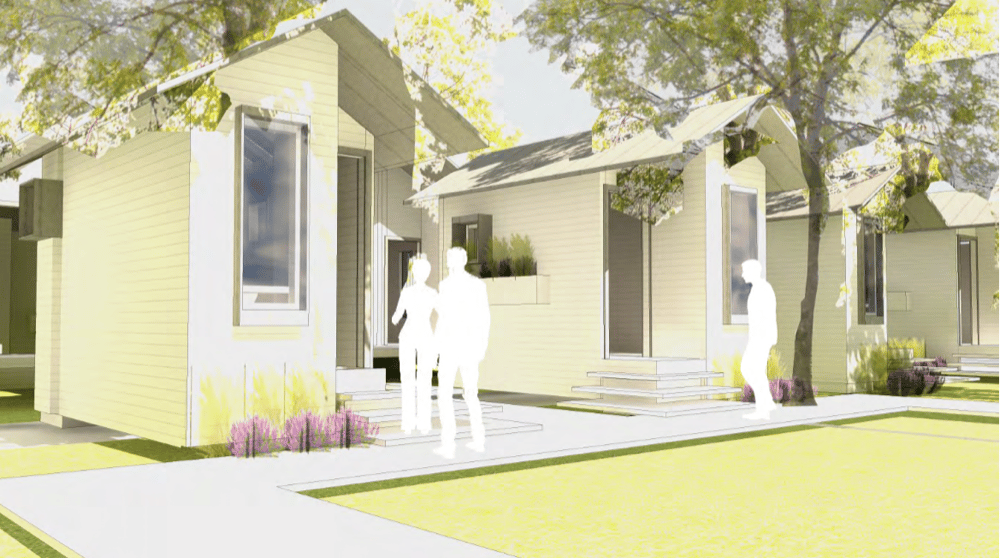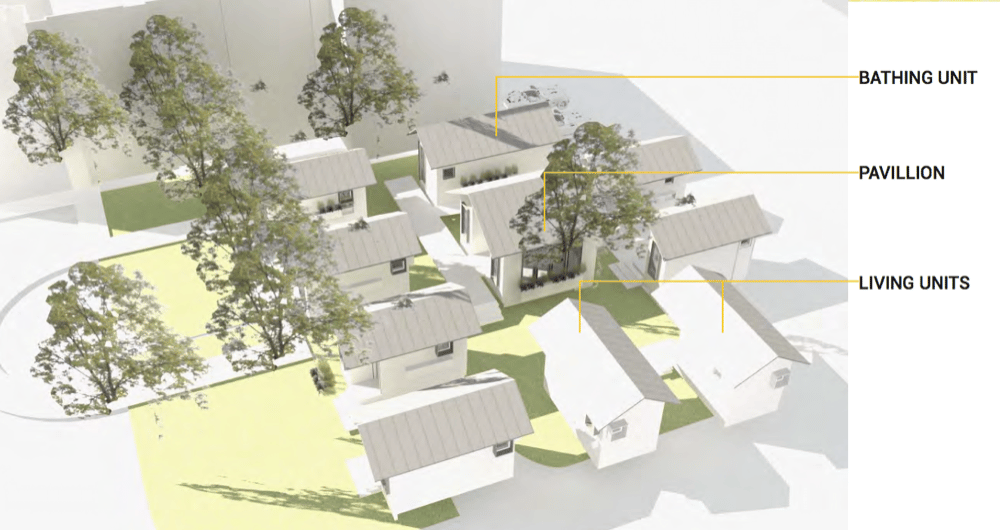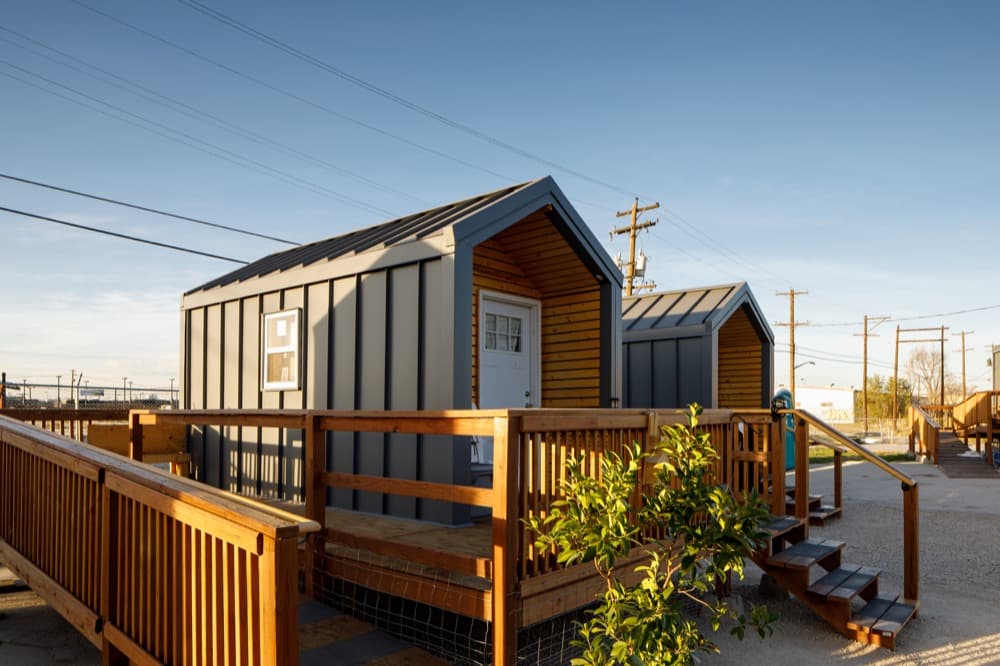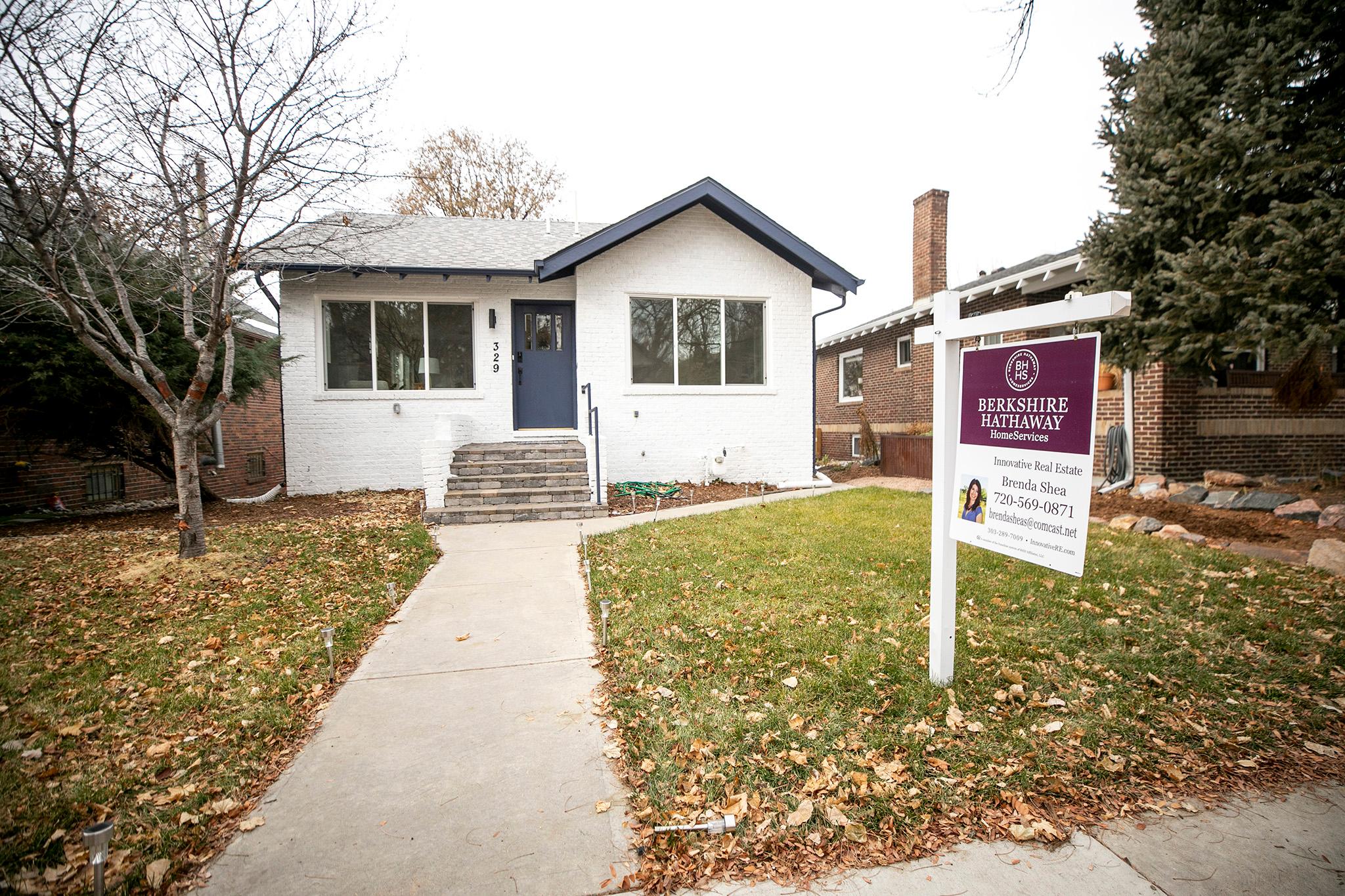There will be no tiny-home village for women experiencing homelessness at St. Andrew's Episcopal Church.
The plan, which was years in the making, would have put eight temporary homes and two support buildings on the parking lot of the church campus near downtown.
The congregation supported the plan -- but the project is in the Clements Historic District, so it required the approval of the city's Landmark Preservation Commission, which is supposed to ensure that new structures match up with the architecture of designated historical areas.
And it was a no.
The commission denied the application in a 5-1 vote on July 9, with one member abstaining, saying there wasn't a historical precedent in the area for the layout of the property, as confirmed by city spokesperson Andrea Burns.
Meeting minutes weren't immediately available. Kathy Corbett, Earen Hummel, Charles Jordy, Gary Petri and Amy Zimmer all voted to deny the application. Ginette Chapman voted in support of the village plan. Anne Wattenberg abstained.
Now, the project organizers will try a different site nearby, which they haven't yet disclosed.

The commission was supposed to rule on the design of the project.
Some of the members were concerned about the layout of the project, which would have a temporary commons room, bathhouse, cottages and 4-foot fence to the property, according to Allyson Dodge, an organizer with the St. Andrew's congregation.
"My understanding of why they didn't approve it is that ... that composition didn't exist anywhere, and they didn't want to approve that composition of 10 accessory units because they didn't want to set a precedent," Dodge said.
Burns confirmed that the commission discussed the site layout. The commission specifically cited rules 4.1, 4.2 and 4.3 of the historic guidelines, which generally require buildings to have designs, locations and layouts that fit with historic districts.
The historic district is fairly small. It stretches from the church east to the intersection of Tremont Place and 22nd Street. It includes older two-story homes, as well as acres of parking lots and these townhomes from 2013.

The project faced skepticism from its neighbors.
"There have been neighbors that are very concerned about the use. I don't think anyone cares about the design, but because we're in a historic district, that's the process we have to go through," Dodge said.
Denver city staff have been supportive of tiny villages. The city recently created a special wrinkle in its zoning code that allows the temporary construction of tiny homes. They can stand for up to 360 days.
City staff also specifically recommended that the historical commission approve this specific project.
"The proposed structures have been designed to be as compatible as possible to the Clements Historic District, though there are few dwelling units in the surrounding historic context that are of a comparable size to these tiny houses," a staff report stated.
But the decision was ultimately up to the commission, whose members are appointed by Mayor Michael Hancock.

The village had raised close to $60,000 online and another $95,000 from foundations. The organizers, Colorado Village Collaborative, also created the city's first sanctioned tiny-home village at 38th and Blake, which is generally considered to be a success.
St. Andrew's plans to keep working with Colorado Village Collaborative to find a nearby site.
"We still support the village," Dodge said. "It won't be in our parking lot."
Cole Chandler, an organizer with CVC, said he was disappointed by the outcome.
"I find it concerning that a faith community decided to do something to address the housing crisis, and the city process ultimately got in the way and prevented the project from moving forward," he wrote in a text message.
And he hoped, he wrote, that the commission would approve the larger, permanent housing plan proposed for the St. Andrew's plan.
"This housing is desperately needed," Chandler wrote.
Updated with new fundraising totals.













